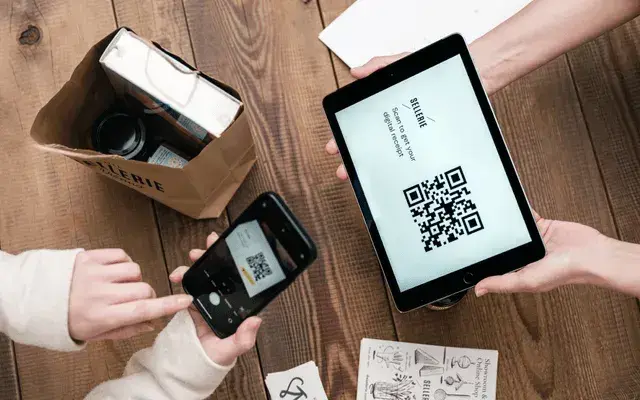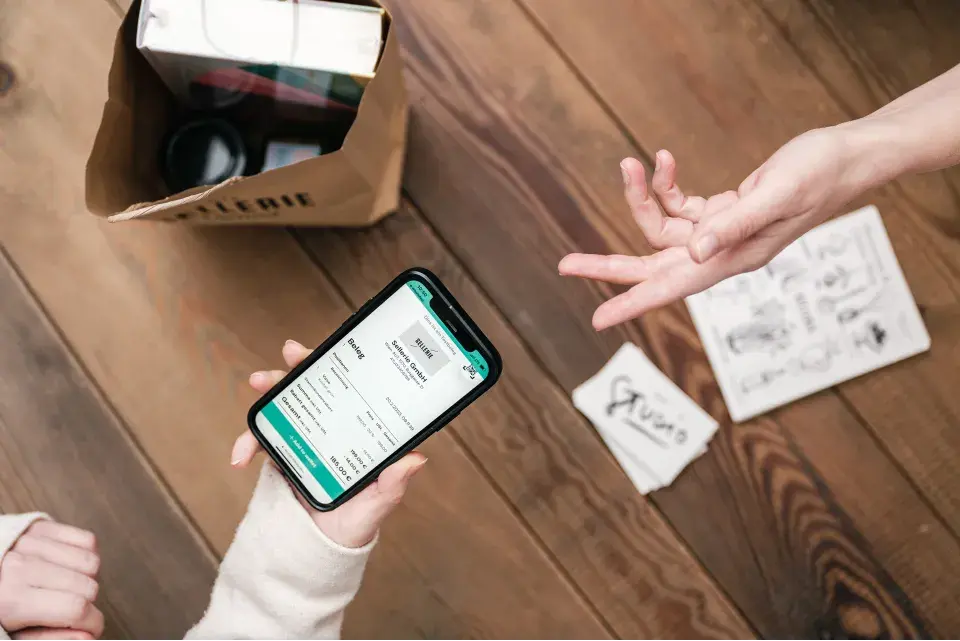
The e-receipt is here to stay
Imagine this: you walk into a bakery to buy a donut or a croissant. Your treat is adorned with a sugar glaze receipt showing the price, quantity, and receipt number. In January 2020, 200 sugar glaze receipts embellished the traditional Bavarian filled donut (the so-called Krapfen), in a Bavarian bakery. This wasn't an expression of affection for the aesthetics of receipts by the bakers; it was a protest against the introduction of the mandatory receipt issuance law in Germany in January 2020.
The receipt issuance obligation aims to ensure the transaction is recorded in the cash register system and prevent tax evasion. "Stop the receipt and trash madness immediately," demanded the Central Association of the German Bakers back then. In response to protests from bakers and many other industries, the federal government sought to appease concerns by emphasizing that receipts could also be issued electronically. Concrete guidelines were however not forthcoming; implementation was left to individual companies.
The e-receipt is here to stay
Today, transitioning to electronic receipts is only a matter of time. Bitkom states that digital receipts already play a role for 44% of companies. According to a 2022 study on POS systems by EHI, approximately 34% of all receipts in Germany can now be issued digitally. The forecast for the future is 95%. Companies like Rewe already offer digital receipts through their app.
Innovation often becomes possible only when businesses, as well as consumers, are ready for it. A popular example is the predecessor of the Macintosh: In December 1968, Xerox introduced a technology with a mouse and graphical display, the Xerox Alto. Accounts of that time suggest that managers at Xerox viewed typing correspondence as secretarial work and calculating numbers as tasks for the accounting department, hence showing little interest in the wider distribution of the Alto. The device was used only internally at Xerox. Many of the innovations in the Alto were later adopted by Steve Jobs for the Apple Macintosh, which was released in 1984 as the first commercially successful personal computer and revolutionized society. The Xerox Alto was ahead of its time.
Saving paper and retaining customers
Society is more than ready for the e-receipt. The surplus paper generated by paper receipts is not only an environmental burden but also cumbersome: consumers rarely take receipts with them, and merchants must dispose of them at the end of the day. If thermal paper is used, the receipts must be disposed of separately. This is a real problem, especially for businesses selling large quantities at low prices.
Furthermore, the electronic receipt is an opportunity to connect with consumers. Advertising or information initiatives can be linked on the receipt through a barcode. In an economy where community building is central to maintaining and establishing a customer base, such communication is essential. People don't just want to shop; they are looking to be affirmed in their values, lifestyle, and sense of belonging.
Empowering customers
In the future, it will become increasingly important to provide customers with a pleasant shopping experience. Digital receipts could be easily integrated into a digital wallet. They enable customers, especially in these times of perceived economic scarcity coupled with a desire for financial autonomy, to manage expenses digitally—a growing trend.
Digital receipts are helpful for tax returns, as they allow individuals to collect their expenses in one place. Customers can also better exercise their right to return items—a right that studies show is often not utilized because paper receipts are lost.
Anticipating the Zeitgeist
The idea of people keeping physical documents contradicts the concept of minimalism, which increasingly defines our time. Documents need to be stored, and storing is becoming more and more 'outdated.' Many people don't have home offices where they stack bulky folders of receipts over years. Young people, the consumers of the future, according to studies, prefer to manage everything on their phones.
The digital receipt aligns with the zeitgeist on various levels much more than the paper receipt: it avoids paper waste, it facilitates communication with the customer, and it empowers customers to have better control over their finances and tax matters. Transitioning to this model is now a matter of time, much like the personal computer. Those who don't take this leap today will lag behind the competition. Merchants will want to offer the e-receipt and POS providers must be prepared.


